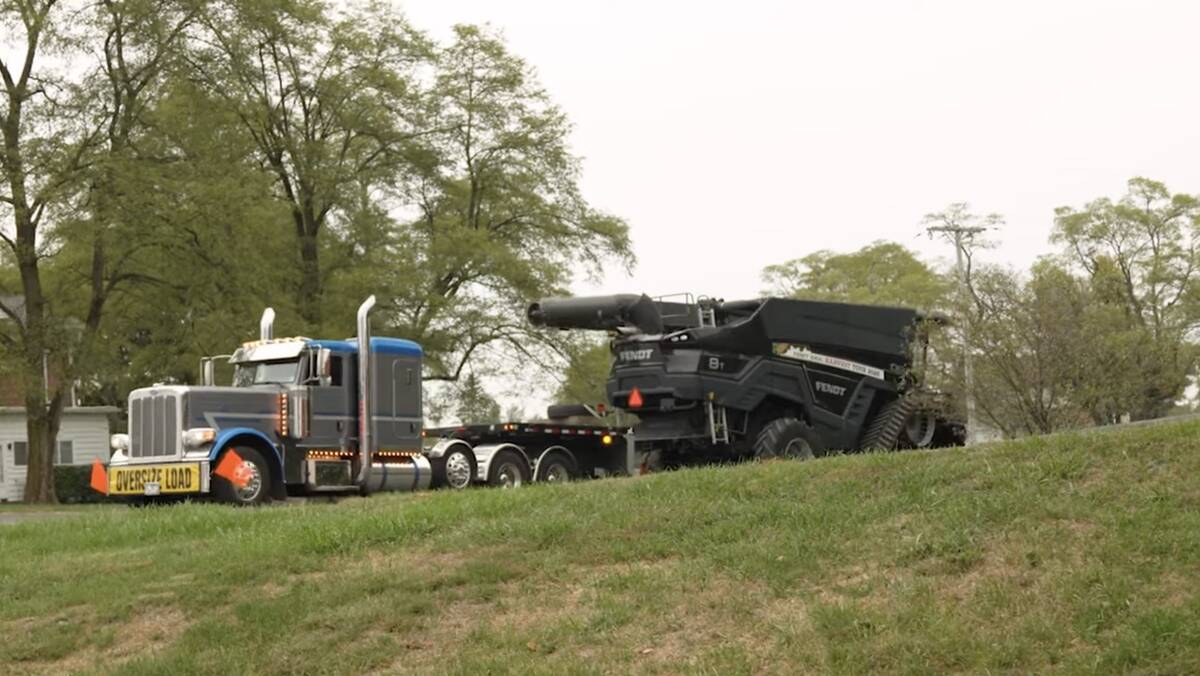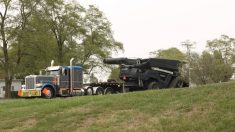Colin Shirtliff was Case’s first Canadian customer for a rubber-tracked combine.
He took delivery in July and traded it three months later, not because he wanted to get rid of it but because he liked it so much that he wanted a newer one.
After harvesting nearly 3,000 acres this fall near Starbuck, Man., Shirtliff decided to upgrade to a 2011 model before every other farmer in the region caught on to how well the tracked combine performed.
He said he had 600 wet acres, as well as another 200 acres that were extremely wet.
Read Also

Fendt takes a combine on the road in the U.S.
Putting an Ideal combine in fields across different regions has given the brand a chance to prove that the combine is capable of performing well in a variety of conditions.
“Most of those crops would still be standing in mud today (Sept. 27) if I hadn’t bought the tracked machine,” Shirtliff said.
“We couldn’t get into those fields with our 750 bushel grain cart. We had to drive the combine over to the cart.”
The biggest benefit wasn’t in standing water but in soft mud, a typical field condition when it rains in the Starbuck area in the fall. It’s the worst muck of all to get stuck in, he said.
“But with all that saturated soil this fall, the combine tracks only sank two inches into the ground. Statistically, they say we only get this extreme wet weather about two years out of 10. But where we farm, that changes in an awful hurry in the fall. It’s so flat that if we get just one or two big rains, then we’re fighting mud the rest of the harvest season.”
Shirtliff said the extra $50,000 investment seems like a lot of money, but there are no more sleepless nights thinking about trying to combine in mud.
“Once you’ve made the step, you’re there and you no longer need to worry about wet harvests. That’s worth a lot to me.”
Shirtliff said he used a Lexion for the past four or five years and was happy with it. He typically keeps a combine five to 10 years.
He was hoping to upgrade to a rubber tracked Lexion when he heard about Case combines going to rubber tracks.
“So I made a deal with Chabot and took delivery in July. The harvest went very well. I probably would have kept the 2010 model for five or 10 years, but we worked out a deal on a new 2011 machine and he took my trade right away.”
Shirtliff thinks rubber tracked agricultural equipment is the technology of the future in areas where wet soil is a limiting factor.
“Rubber track tractors took a while to catch on, but more and more farmers are buying them now.
“None of those guys would ever go back to round tires after having tracks. I think the same will happen with combines and other field equipment.”














